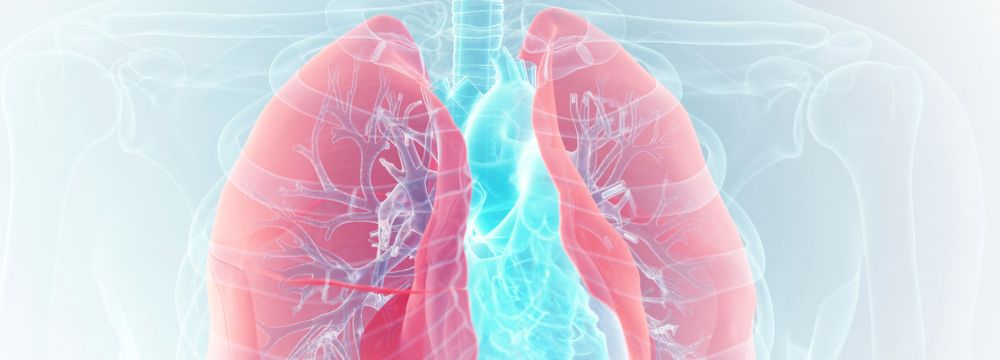Understanding the Stages of Atrial Fibrillation (Afib)

If you have researched Atrial Fibrillation or Afib, you’ll know that it is a progressive condition that, if left untreated or under-managed, can progress, often quickly, in severity. Atrial fibrillation often begins as occasional, or as electrophysiologists call it, paroxysmal. Left untreated, it can eventually become permanent; however, there are stages in between. Here, we will discuss the four stages of atrial fibrillation, as well as what they mean to the patient and what treatment options are available at each stage.
It’s worth understanding that early detection and treatment are best to ensure a positive outcome, as is the case with most other conditions and diseases. The longer the patient waits for treatment, the less likely they will have a satisfactory result.
Semaglutide Study on Cardiovascular Disease

Heart disease is the leading cause of death in the United States4, and one of the greatest contributing factors to heart disease is obesity. With nearly 75% of the adult population considered overweight or obese, this puts much of the country at risk for heart disease. Though somewhat outdated, BMI remains the number one measurement for determining obesity. Using a formula based on height and weight, a BMI greater than 30 is obese, while a BMI between 25 and 29.9 is overweight.² We will discuss the pitfalls of such a formula to determine health in a future article, but it is the standard tool providers use today.
New Ablation Technology on the Horizon
 Electrophysiology has always been one of the most technologically advanced specialties in cardiology and medicine. We require sensitive and technologically advanced equipment and specialized, nuanced techniques because every heartbeat is comprised of a complex electrical system. Further, because ours is a relatively newer cardiology subspecialty, we have benefited from advances that began in the minimally invasive era and have only improved since then.
Electrophysiology has always been one of the most technologically advanced specialties in cardiology and medicine. We require sensitive and technologically advanced equipment and specialized, nuanced techniques because every heartbeat is comprised of a complex electrical system. Further, because ours is a relatively newer cardiology subspecialty, we have benefited from advances that began in the minimally invasive era and have only improved since then.
What Is Pulmonary Vein Isolation, or PVI?

As the name suggests, the pulmonary or lung veins are the vessels that deliver oxygenated blood from the lungs into the heart’s left atrium. To understand this better, let’s discuss the circulatory system and oxygen. Oxygen is the critically essential nutrient every cell in our body uses to function correctly. Blood is full of oxygen when pushed out of the heart. However, as blood circulates through the body, this oxygen is depleted. Eventually, the oxygen-poor blood cells are returned to the heart by the veins and re-pumped into the lungs. Once in the lungs, blood is infused with oxygen, and the process continues. Because of their location, the pulmonary veins can cause atrial fibrillation.
Are Weight Loss Drugs the Answer to Our Afib & Heart Health Issues?

Unfortunately, heart disease remains stubbornly prevalent in the United States and worldwide. Cardiovascular issues remain the leading cause of death in the United States despite incredible advances in therapies and technologies to treat heart disease. Cardiovascular disease has many possible underlying causes, but one of the most preventable and prevalent is excess weight and obesity. About 2/3 of the US population is overweight, and over 1/3 is obese. These trends have risen over the past several decades; unfortunately, we don’t see much relief.
The effects on the heart are staggering. Excess weight causes high blood pressure, high cholesterol, sleep apnea, and type 2 diabetes, all significant risk factors for developing or worsening cardiovascular disease. Many are also risk factors for atrial fibrillation / Afib and other heart rhythm abnormalities.
Zone 2 Training – An Exercise for Most Afib Patients

Many Afib patients are rightfully concerned about exercising with a heart concern top of mind. After all, heavy exercise may be a trigger for an Afib episode. Further, there is often the fear on the patient’s part that exercise can or will cause a heart attack. While exercise itself is not the culprit, this is a legitimate concern because the increased blood flow necessitated by heavy exercise can worsen symptoms of existing cardiovascular problems.
That said, it’s important to mention, before we continue, that any new exercise regimen, no matter how mild, should be discussed with your electrophysiologist or cardiologist to ensure suitability.
Zone two training, as it is known, can be one of the most effective exercise regimens for patients with atrial fibrillation and other cardiovascular concerns. Let’s start by understanding what exactly zone two training is. This form of training is not a new fad in the exercise world but a tried-and-true pursuit that many of the top athletes worldwide employ. And no, it’s not high intensity; quite the opposite. Zone two training aims to maintain a consistent 70 to 80% of maximum heart rate for between 45 and 60 minutes. While a heart rate monitor can give you this exact measurement, we often approximate this zone by the patient’s ability to maintain a conversation during exercise.
Why Hydration Is So Important for Your Heart (And Afib)

With all the ailments we as Americans have and the medicines and procedures available to treat them, we often overlook some of the easiest, most accessible, and most important lifestyle changes that can make a significant difference. Staying hydrated and getting enough water falls into this category. A substantial portion of our bodies are made up of water, so staying hydrated is, clearly, very important.
While we all know the signs of severe dehydration, it’s often difficult to remind ourselves that there are more subtle signals that we may need extra water. Importantly, even a 1 or 2% deficit in hydration can make a huge difference physically and cognitively. We may think of hydration as only necessary during periods of heavy exercise; however, water improves our general physical health. Have you ever tried taking a glass of water when you feel sluggish during the day? For most, this offers an almost immediate boost. Dehydration has been linked to feelings of tiredness as well as feelings of hunger. Both have detrimental effects.
Gender Differences of BMI & Waist Circumference as Atrial Fibrillation Risk Predictors

When we discuss cardiovascular disease, including atrial fibrillation or Afib, we often talk about risk factors to help us predict whether our patients need screenings and determine how soon we begin diagnostic testing. It may seem that with the many and varied causes of atrial fibrillation, including the fact that it can affect people of all ages and fitness levels, Afib is just one of those things you ultimately get and eventually treat. However, we know of certain factors that can help predict the risk of developing it. One such risk, and something that is unfortunately only getting worse in the United States and around the world, is excess weight and obesity. As a leading cause of longer-term cardiovascular issues like high blood pressure, atherosclerosis (or the narrowing of arteries due to plaque formation), type 2 diabetes, and sleep apnea, the excess weight represents a significant risk factor for developing and worsening Afib and other cardiac rhythm abnormalities.
An interesting 2021 study out of the Netherlands tried to understand the degree to which body fat distribution in the form of waist circumference and BMI or the body mass index might predict Afib development.¹ And does it matter if you’re a man or a woman?
Comparing LAA Closure Devices: Amulet vs. Watchman

If you’ve been diagnosed with atrial fibrillation / Afib, you’ve probably been told you have a significantly increased risk of stroke – a five-fold increase in risk. Managing this stroke risk is the primary goal we, as electrophysiologists, have when treating Afib. While our minimal invasive cardiac catheter ablation procedures are very effective at treating paroxysmal and certain persistent cases of Afib, they cannot reverse the existing risk of stroke because that ultimately comes from a small outpouching of the heart known as the left atrial appendage for LAA. This feature of the heart, whose existence we don’t fully understand, causes outsized effects on the risk of stroke.
The AHA Ranks Popular Diets from Best to Worst with Few Surprises

The American Heart Association (AHA) recently weighed in on the many varied diet plans available today, some heavily promoted by social media influencers and other celebrities and personalities. While the results of the studies and the AHA’s statement are not entirely surprising, it’s worth discussing the diets that are out there, how one should diet, if one should diet, and ultimately, what these findings mean for how you lose weight and change your lifestyle.